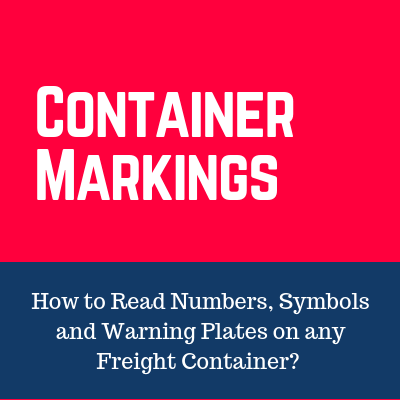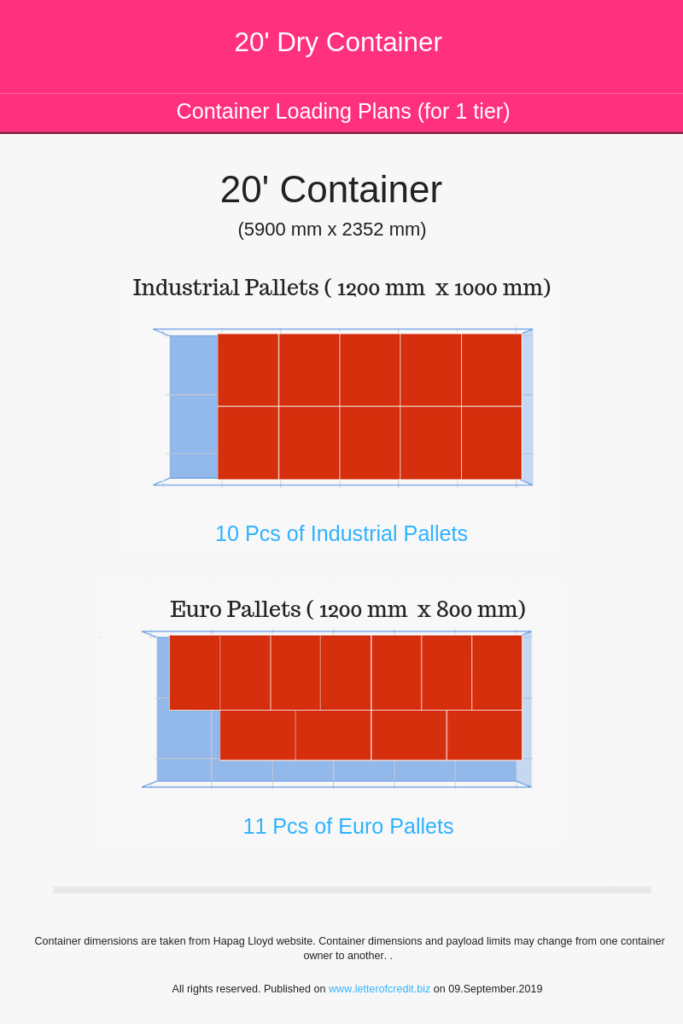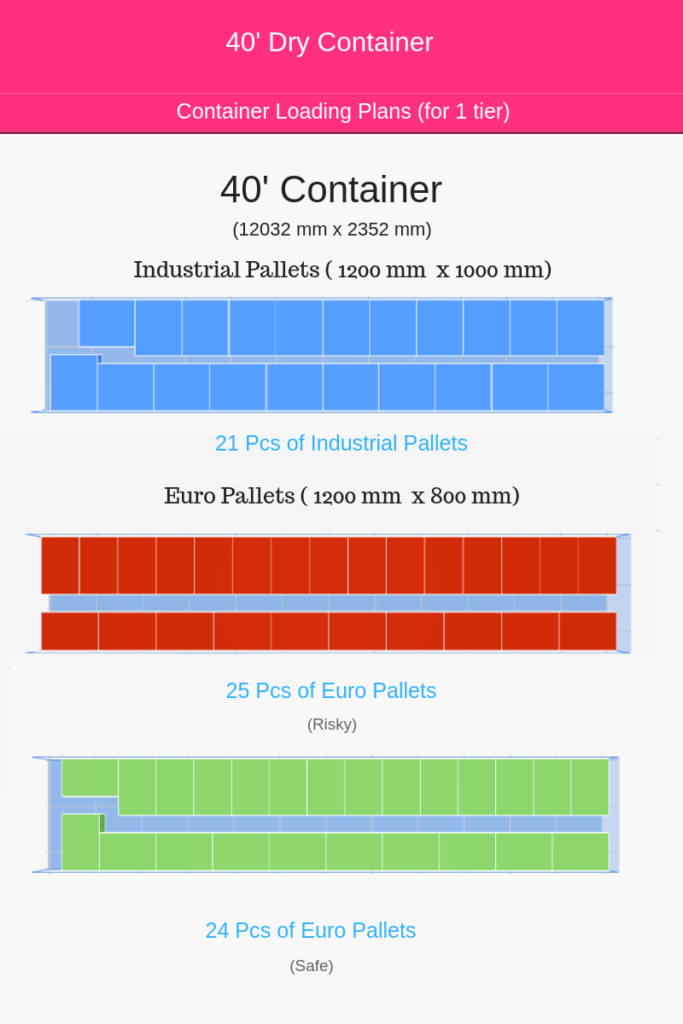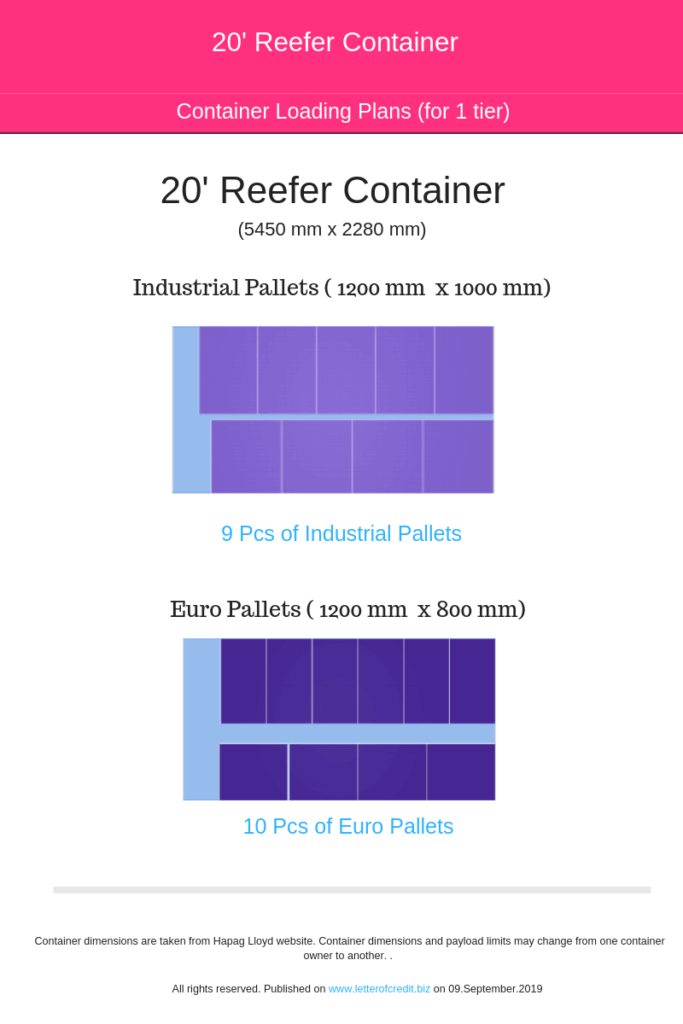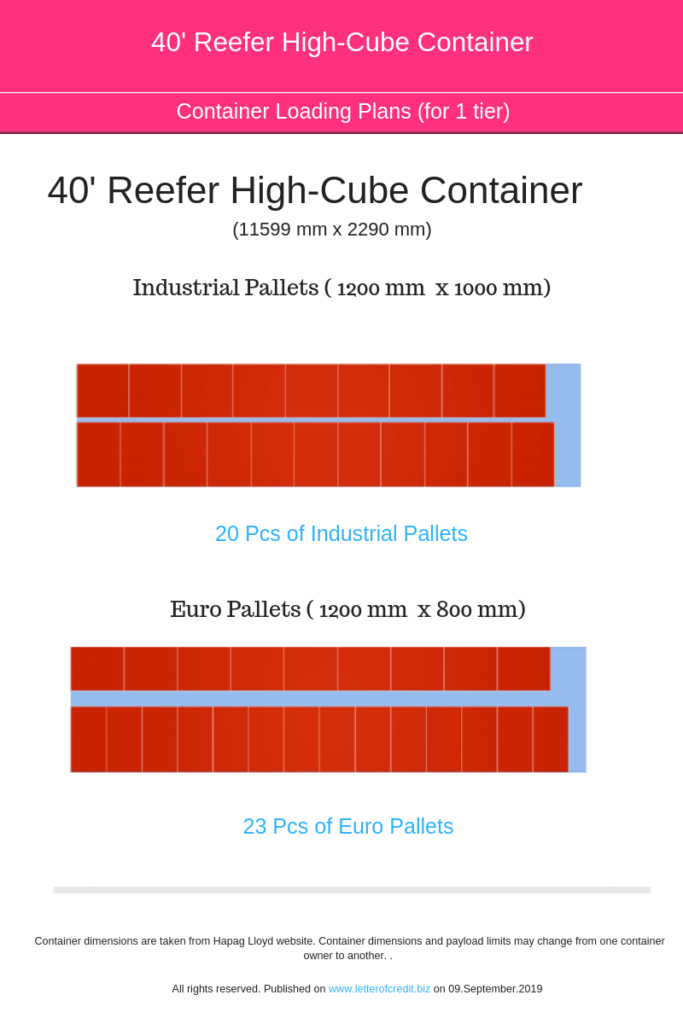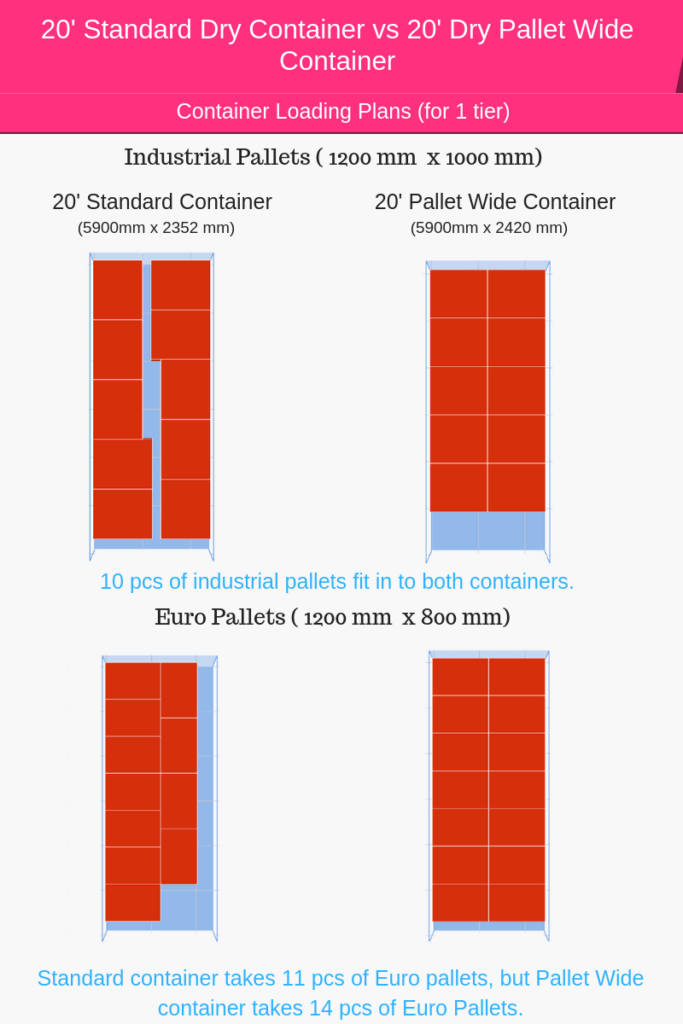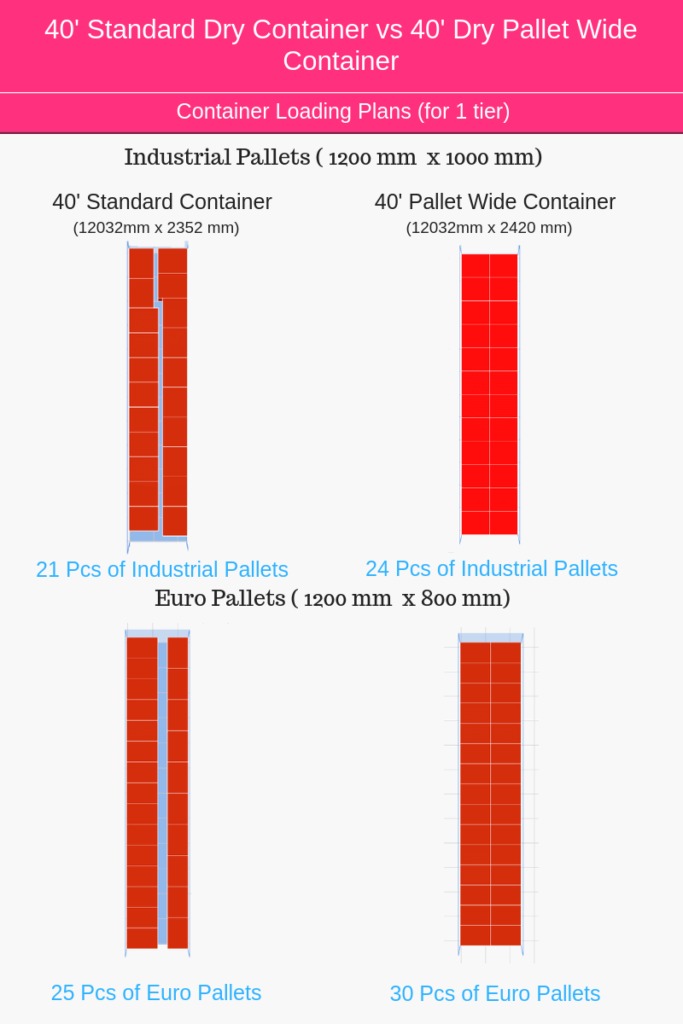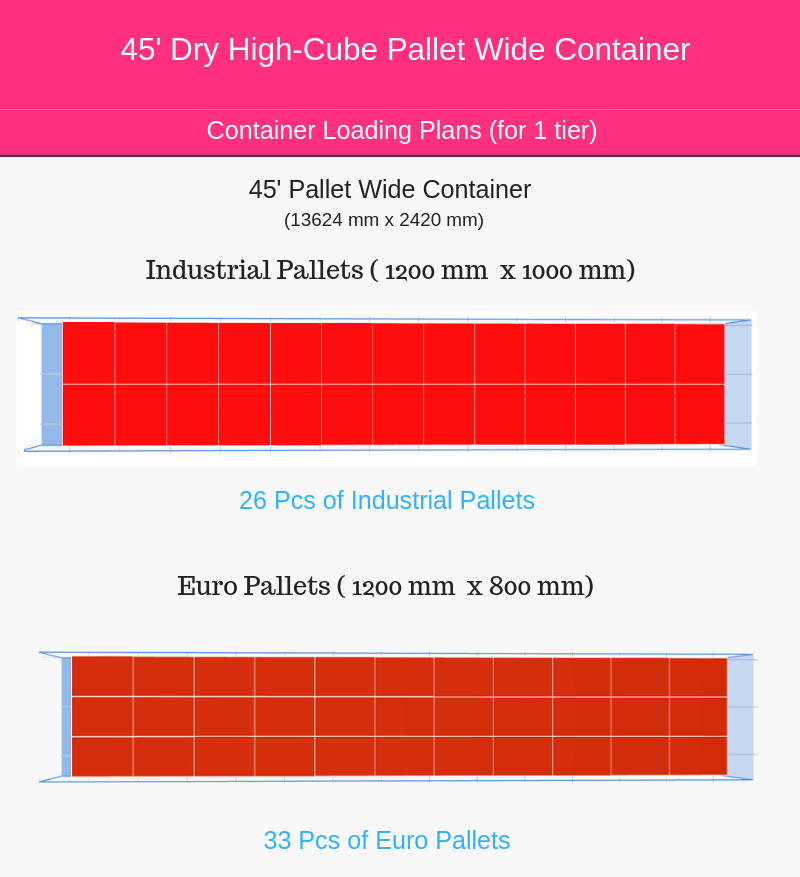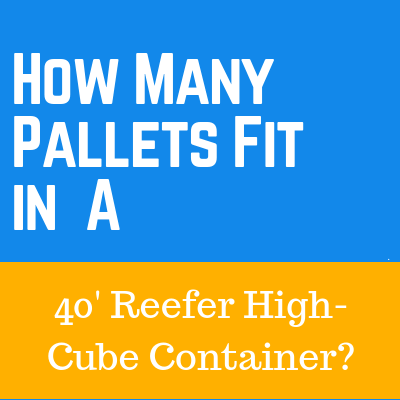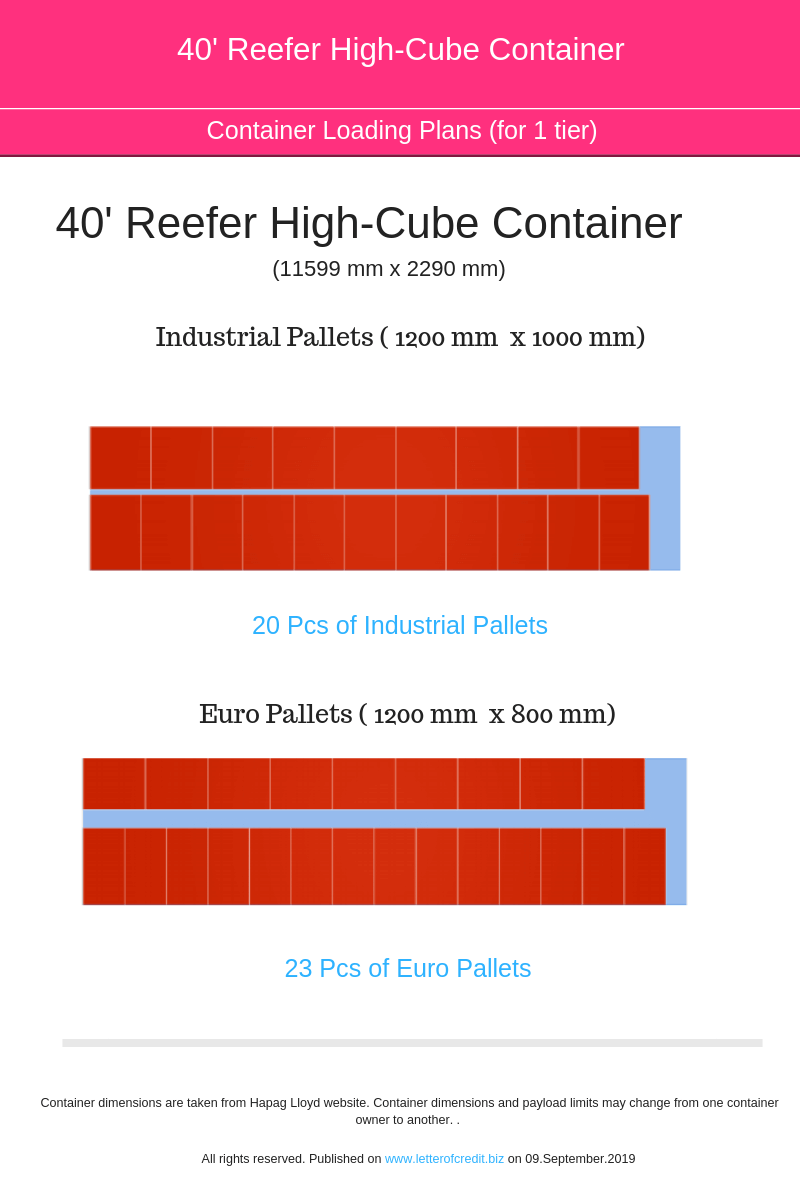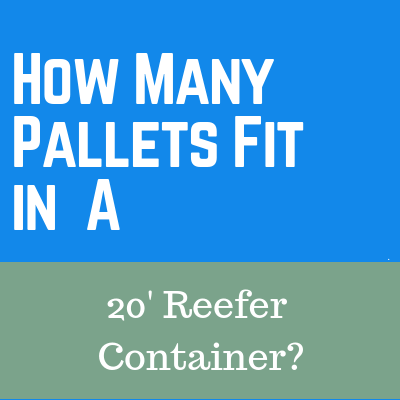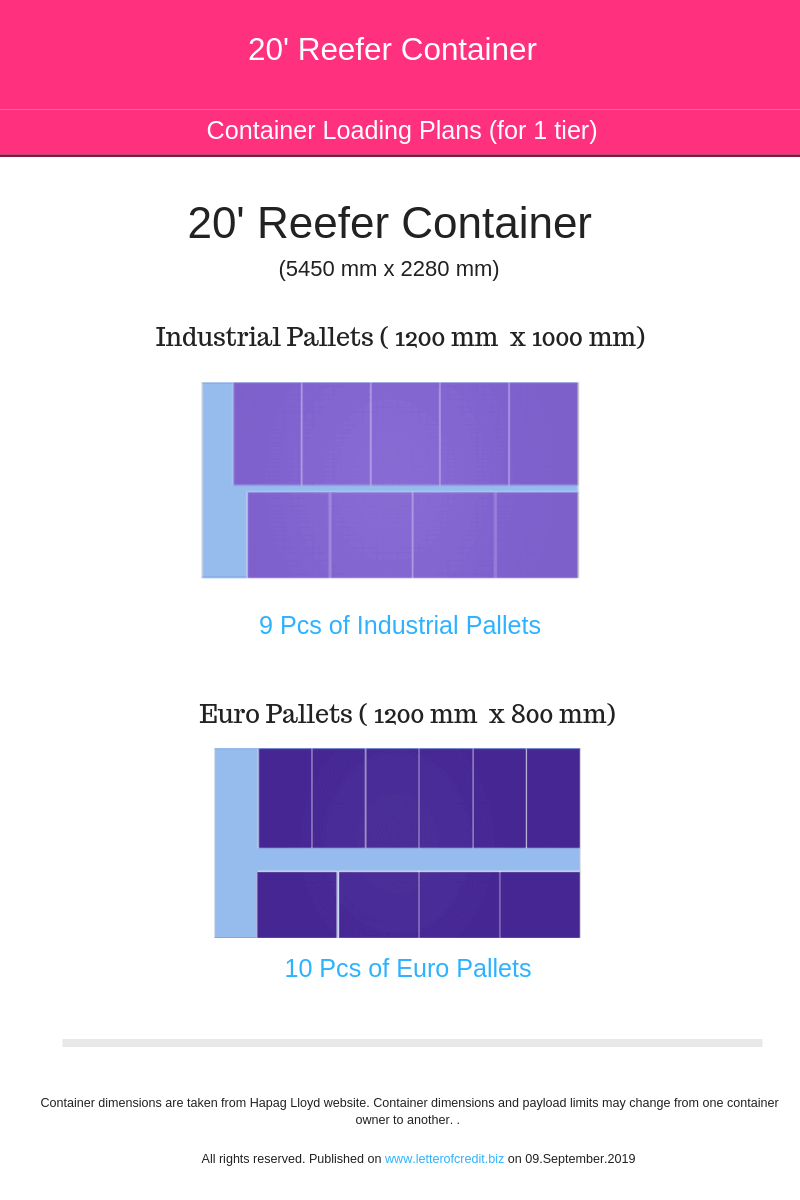Containers are the main Cargo Transport Units (CTU) in international transportation. They increase efficiency and decrease costs in all stages of the transportation.
Containers used in international transportation must carry standard markings in order to:
- easy container and cargo tracking
- increase border protection measures and prevent illegal cargo traffic
- increase efficiency at port operations etc.
On this post I explain container markings and how to read numbers, symbols and warning plates on a freight container.
Container Markings
Door End Markings:
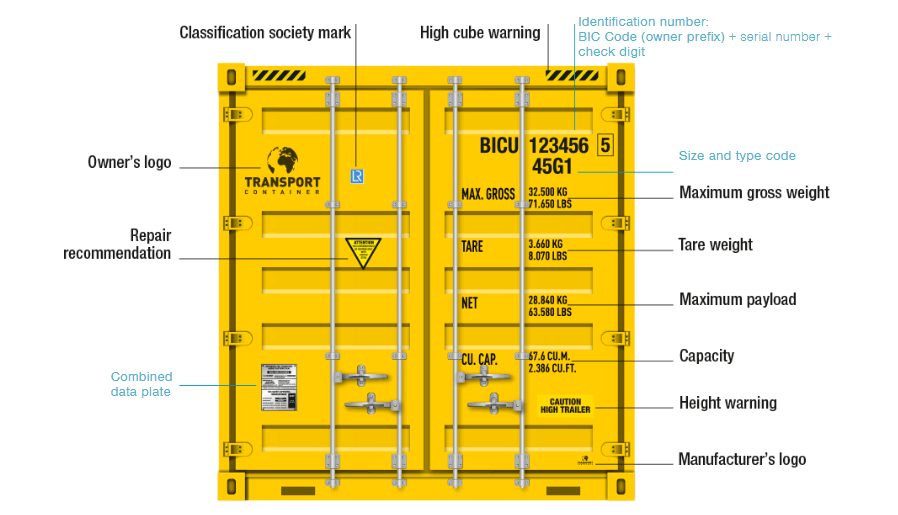
At the container end on the container doors you can find main container markings.
- High cube warning: Only high cube containers carry this warning symbol.
- Container Identification Number: Container identification numbers are assigned by The Bureau International des Containers, which was founded in 1933 as a neutral, non-profit, international organization whose mission is to promote the safe, secure and sustainable expansion of containerization and intermodal transportation.
Container Identification Number: BIC Code (Owner prefix) + Equipment Identifier + Serial Number + Check Digit
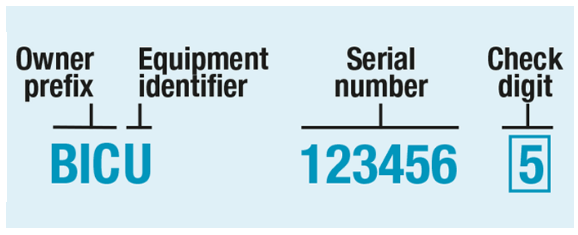
The identification system provides uniform international identification of containers, in documentation and in communication associated with the movement of containers from door to door. It consists of:
The owner prefix (BIC code): three capital letters of the Latin alphabet to indicate the owner or principal operator of the container,
The equipment category identifier: one capital letter as follows:
U for all freight containers,
J for detachable freight container-related equipment,
Z for trailers and chassis,The serial number: six Arabic numerals, left at owner‘s or operator‘s option,
The check digit: one Arabic numeral providing a means of validating the recording and transmission accuracies of the owner code and serial number.(1)
- Size and Type Code: Each container has a standard size and type code assigned by BIC institution. Some examples are given below:
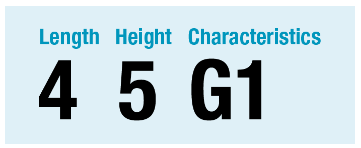
- 45G1: 40′ High Cube Dry Container
- 22G1: 20′ Dry Container
- 42G1: 40′ Dry Container
- 22R1: 20′ Reefer Container
- 42R1: 40′ Reefer Container
- 45R1: 40′ Reefer High Cube Container
- Maximum Gross Weight: This is the maximum weight that the container can carry including tare weight.
- Tare Weight: Tare weight is the weight of empty container.
- Maximum Payload: Maximum amount of weight that the container can carry. This is a calculation based information. Most of the containers can not be loaded to the maximum payload because of the transportation weight limitations. Exporters must consult with their freight forwarders before shipment.
- Capacity: Volume capacity of the container.
- Height Warning: Is another compulsory transportation safety information.
- Manufacturer’s Logo: Shows the manufacturer of the container.
- Owner’s Logo: Shows the owner of the container.
- Repair Recommendation: A container has to be operated either under an ACEP or a PES (Periodic Examination Scheme) from day 1. The first inspections isn’t required until 5 years, but it must have a scheme in place in order to be operated. Without a valid ACEP sticker or Next Examination Date (under the PES), the container should not be loaded on board a ship.(2)
Side, Top and Front End Markings:
On side, top and fronts ends containers carry only Container Identification Number and Size and Type Code markings.
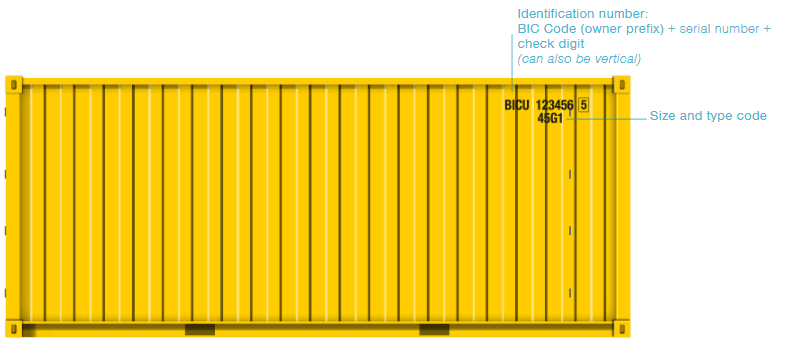
Resources:
- Container Identification Number, Bureau International des Containers et du Transport Intermodal
- Container Markings – What do they really mean?, xChange Solutions GmbH
